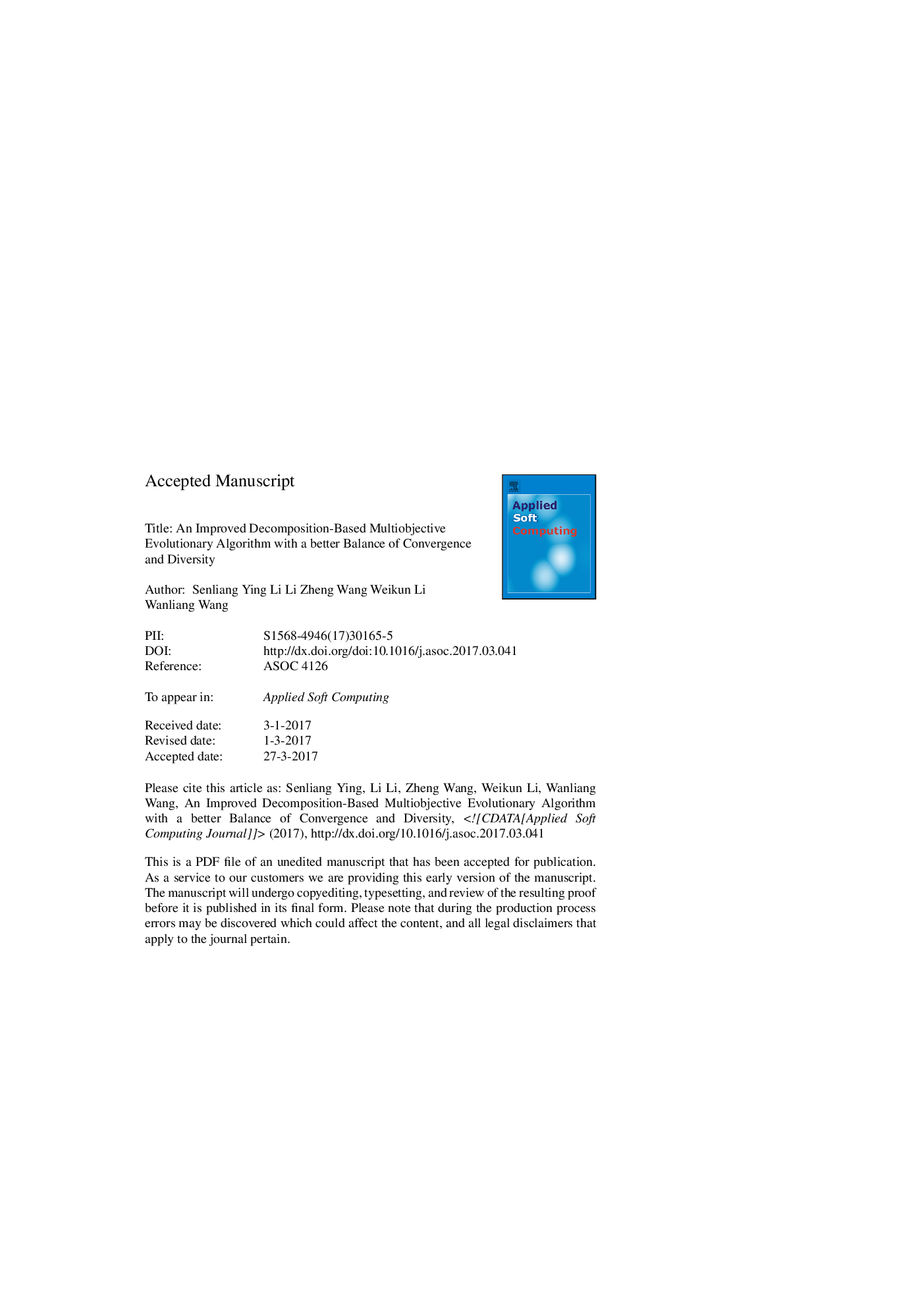| Article ID | Journal | Published Year | Pages | File Type |
|---|---|---|---|---|
| 4963381 | Applied Soft Computing | 2017 | 46 Pages |
Abstract
This figure illustrates the flowchart of the proposed decomposition-based multiobjective evolutionary algorithm with an angle-based updating strategy (MOEA/D-AU). Its basic procedure is similar to most generational multi-objective evolutionary algorithms. First, an initial population is formed by randomly generating individuals. Then, for each subproblem, genetic operators are performed to obtain an offspring population. Next, the acute angles to each direction vector are computed respectively, G minimum angles are selected, the new solution is compared to G solutions corresponding to the G minimum angles. Finally, superior solutions are selected according to the value of aggregation function to update the parent population. It can be seen that there are two key operators in MOEA/D-AU: computation the acute angle between a solution and a direction vector, rank the angles and select G minimum angles. In this study, an acute angle between a solution and a direction vector is used to keep the solution close to the direction vectors, and we select G minimum angles to update the population, as a result, a good balance between convergence and direction is achieved. 145
Related Topics
Physical Sciences and Engineering
Computer Science
Computer Science Applications
Authors
Senliang Ying, Li Li, Zheng Wang, Weikun Li, Wanliang Wang,
